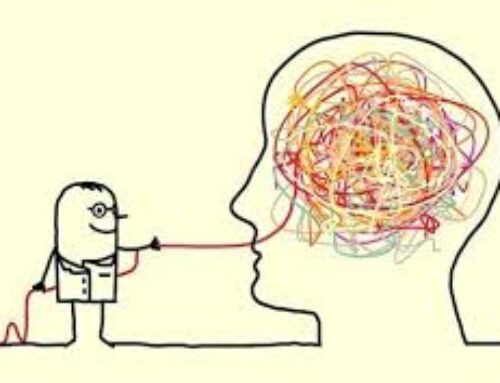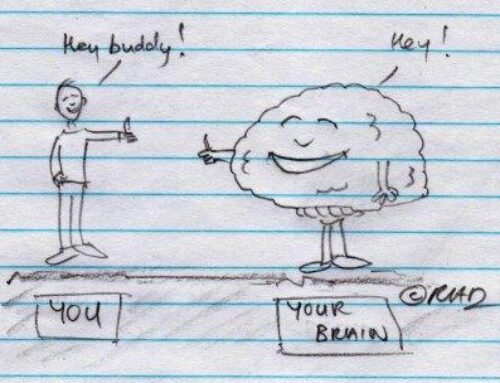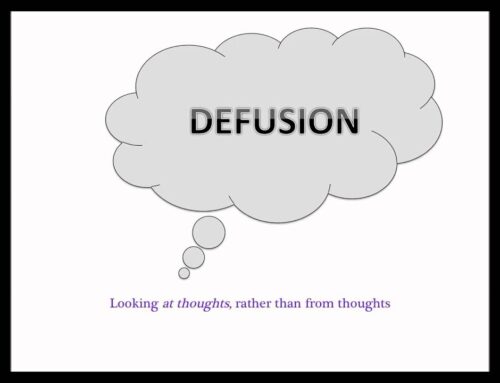The Work: How to Question Painful Thoughts
April 6, 2017
Categories: Thoughts
One of the most important insights from psychology is that the events and situations in our lives do not directly lead to our emotions and reactions. Instead, the events and situations that happen in our lives are filtered through our thoughts, and these thoughts lead to our emotions and reactions. As Shakespeare wrote in Hamlet, “There is nothing either good or bad but thinking makes it so.”
Building on this key insight, I have found that I actually create a lot of my own sadness, anxiety, and misery because of the thoughts I choose to focus on. Perhaps you can connect with this idea in your own life. But how do we bring our most painful thoughts into question?
Byron Katie has developed a system called ‘The Work’ which provides a step-by-step method to bring our most painful thoughts into question. I’m going to walk through the steps below, and also give an example from my own life to illustrate each step.
- Identify the painful thought. The first step is to identify the painful thought. Sometimes we might have an emotional reaction, but fail to identify the thought that is connected to the reaction. It is important to make the connection. For example, I remember one day I got up in the morning, checked my Facebook, and I noticed a post from a friend about his birthday party that happened the night before. This was my first time hearing about the party, so I realized I wasn’t invited. Immediately, I felt sad and left out. The painful thought was: He doesn’t like me.
- Is it true? The second step is to ask yourself whether the thought is true. Check in with yourself. This question can be answered with a simple yes or no. When I checked in with myself, it felt like the thought was true, so I answered yes.
- Can I be absolutely certain that it is true? The third step is to ask yourself whether you can be absolutely certain, beyond a shadow of a doubt, that the thought is true. This question can also be answered with a simple yes or no. When I checked in with myself, I recognized that I couldn’t be sure that not inviting me to the party meant that he didn’t like me. So I answered no.
- What effect does the thought have on me when I believe it is true? When you examine your life, what effect does believing the thought have on you? What emotions or feelings does the thought stir up in you? When I checked in with myself, I recognized that the thought caused me to feel sad, lonely, and depressed.
- Who would I be without the thought? What if you didn’t believe the thought was true? What would happen in your life? What would your life be like? When I checked in with myself, I recognized that I would feel happier without the thought. I would also feel freer to engage with my friend in a positive way if I didn’t believe the thought was true.
- The turnaround. The final step is to consider how the opposite of the thought might be true, and gather evidence supporting the opposite. Depending on the thought, there might be a few different ways that the opposite might be true. For example, for my thought (i.e., He doesn’t like me), I identified three possible opposites and gathered evidence for each one.
- He does like me. The first opposite was that he does in fact like me. I remembered a previous time when we were hanging out together and he seemed to genuinely enjoy my company. I also recalled a recent time when he said that he would like to get together for dinner with me.
- I don’t like him. The second opposite was that I don’t like him. I identified an aspect of his personality that annoyed me. I also realized that I couldn’t remember the last time I had initiated with him and asked him to go do something with me.
- I don’t like myself. The third opposite was that I don’t like myself. I remembered a time the previous weekend when I didn’t have any plans. I felt badly about myself and judged that I was a loser and people didn’t like me.
The Work allows you to question the painful automatic thoughts that we all sometimes have in reaction to our circumstances. When we do this, we can become curious and consider different options or possibilities. For example, when I went through the Work, the thing that stood out to me the most is that I couldn’t remember the last time I had invited my friend to do something with me. I had an expectation that I would be invited to his events, but I wasn’t putting much work or initiative into the relationship myself. This is a pattern I have in my life, and I started to get curious about whether it might be in my best interest to do something different and initiate more. I thought about giving him a call and asking him to go do something with me. None of that insight would have happened if I had stayed stuck in my feelings of sadness and being left out.
Discussion: Identify a situation that is a struggle for you right now. Identify one painful belief or thought that is connected to that struggle, and go through the steps of The Work. What came up for you as you went through this process?
Related Thoughts
No Comments
Leave A Comment

Subscribe To My Newsletter
Join my mailing list to receive the latest blog posts.
Receive my e-book “The Mental Health Toolkit” for free when you subscribe.






[…] to address problematic thoughts and beliefs. A big part of anxiety has to do with problematic thoughts and beliefs. People who are anxious often have mistaken beliefs about the danger of a particular situation. For […]
[…] order to address a psychological problem (such as anxiety or depression), CBT tries to target the problematic thoughts and behaviors that are associated with the distressing feelings. For example, if a person is […]
[…] kind of counseling is called cognitive-behavioral therapy (CBT). It’s based on the idea that our thoughts, feelings, and behaviors are all connected and influence one another. For example, if we are […]
[…] I stopped myself. I had been reading a great book called “Loving What Is” by Byron Katie. One of her main points throughout the book is to stay in your own business, […]
[…] first step is called inquiry. This process is what Byron Katie is perhaps best known for. The process of inquiry is based on the premise that whenever we feel stressed or upset, there is an underlying thought […]